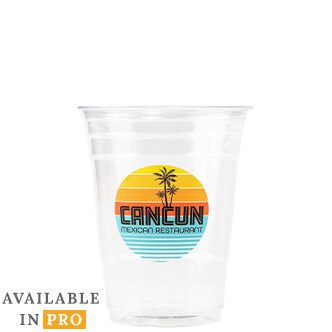2022 has been quite the year for change. We’re seeing new trends sprout up everyday that accelerate the growth of businesses worldwide: hybrid work schedules, emphasizing the customer experience, and the revamping of company culture just to name a few. So what’s changing on the marketing side?
Marketers have been accustomed to using a funnel tactic to grow their brand over a period of time. Now marketing experts are adopting the flywheel model instead of the funnel method. Today, we look at the tenets of flywheel marketing and why this marketing strategy is changing the game.
Funnel vs Flywheel Marketing
The funnel and flywheel marketing models both acknowledge a customer’s journey through your brand. The two, however, have key differences that attract potential customers differently. Marketing experts agree that the funnel model is now outdated compared to the flywheel model, which is disrupting marketing and business.
Funnel Marketing
The funnel model is a classic tool used in marketing. It’s like a “rinse and repeat” dynamic with progressive stages. The funnel starts with word of mouth marketing at the bottom of the funnel. The customer journey elevates to:
- Loyalty
- Conversion
- Consideration
- Awareness
Filling the funnel is important because it’s about the quantity of leads. Businesses with a funnel model put plenty of effort into filling the funnel with more potential consumers. The flywheel approach helps marketers because it’s a step by step process with easy visualization. Marketers could see where people stop following the journey through the brand and where drop-offs happen at each stage.
Flywheel Marketing
The flywheel marketing model is dedicated towards replacing the classical funnel method. How you attract new business to your company is the center focus of the flywheel. These are the three components to this specific model:
- Attract
- Engage
- Delight
The three elements work as a cycle (or a wheel) rather than progressive stages over time. You attract customers by recognizing your target audience and tailoring your business to their needs. Trying to work in the opposite direction can prove to be frustrating for businesses and result in stalled progress.
Next is engaging with customers so you build a connection and customer loyalty. One of the best ways to accomplish this goal is through consistent branding. Items like beverage cups, apparel, and tote bags can all be printed with your company’s logo or slogan. These items are then often used by customers on a daily basis, which helps to keep your brand top of mind. In addition, custom printed products make great marketing giveaways. They are an excellent way to promote your brand while also generating goodwill among potential customers.
Finally, customers are delighted with high-value (and free) content such as emails, social media posts, and other educational materials. The more you keep your customers engaged, the more likely they are to remember you when they need your kinds of products and services.
Creating Momentum With the Flywheel
A flywheel generates momentum by constantly spinning and building kinetic energy. The key takeaway here is that the customer journey never really ends like a funnel model. The flywheel keeps spinning like a cycle which makes customers feel like a part of the company. The faster the flywheel spins, the harder it is to halt momentum altogether.
You may be wondering, “How do companies create momentum in the first place?” It starts with building content. Today, a majority of marketing channels are done online. This may include blogs, webinars, emails, social media posts, and chatbots. It’s common to produce content that is free of charge and serves as valuable, yet informative material for people to consume.
Companies realize that content is king in modern marketing. By producing content and sharing knowledge with others, it keeps them engaged with your business. Once people follow your channels, you keep them delighted by releasing more content. There’s no shortage of knowledge today.
Making Your Own Flywheel
Building your own flywheel model starts with identifying your process. If you had a funnel in the past, think about what strategies worked versus what didn’t. This may include your Key Performance Indicators (KPI) which measure if your company is demonstrating key objectives.
Think about which platforms your company utilizes the best. Do you have a strong following on social media like on Linkedin or Instagram? Does your company have an attention-grabbing newsletter with consistent opt-ins? You don’t have to be a part of every single platform. However, you should focus on delivering quality content that truly benefits your leads rather than making filler content. Find a few marketing channels at first that you do best and double down on making content.
Finally, configure your customer touchpoints and optimize your marketing strategy. Think about where your customers want to go next after reading some valuable content online. For example, you may have a blog that shares knowledge about salesperson tips and guides. 53% of marketers say that blogging is their top content marketing priority. You have the power to carefully place links bringing them to a related blog.
Additionally, you can link your “Contact Us” or “Our Services” page and offer solutions to their problems.
The Flywheel is the Future
Flywheel marketing has caught on in a big way in 2022. It won’t be long before the funnel model is replaced by the flywheel due to ever changing marketing trends. Flywheel marketing focuses on spinning for as long as your company exists. It keeps customers in the loop at all times with engaging, yet delightful content.
It’s always beneficial to stay up to date on the latest marketing trends so you can adapt and stand out from competition. So next time you’re at the drawing board, ask yourself a key question – is this company doing everything it can to keep our customers engaged? The marketing channels of today give you every tool imaginable to make it happen.





